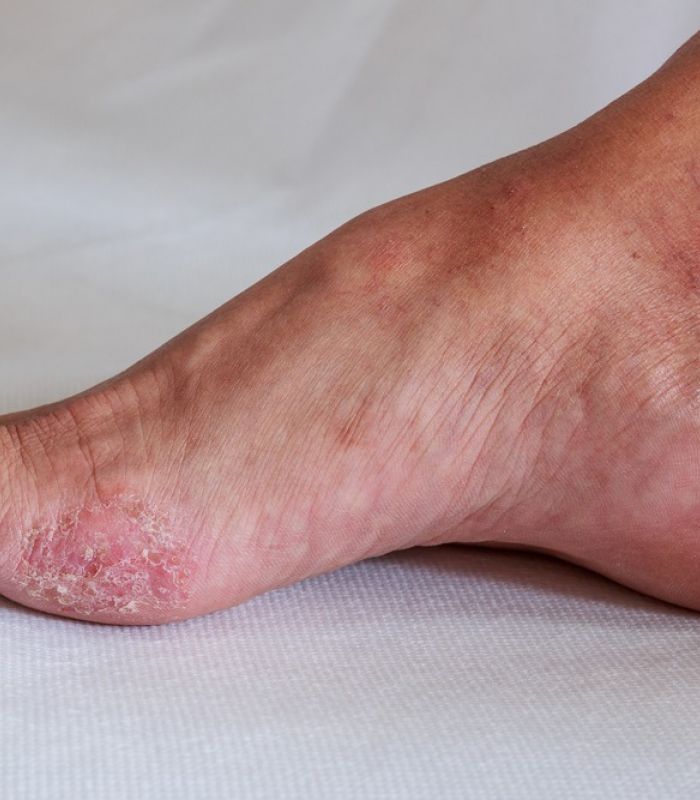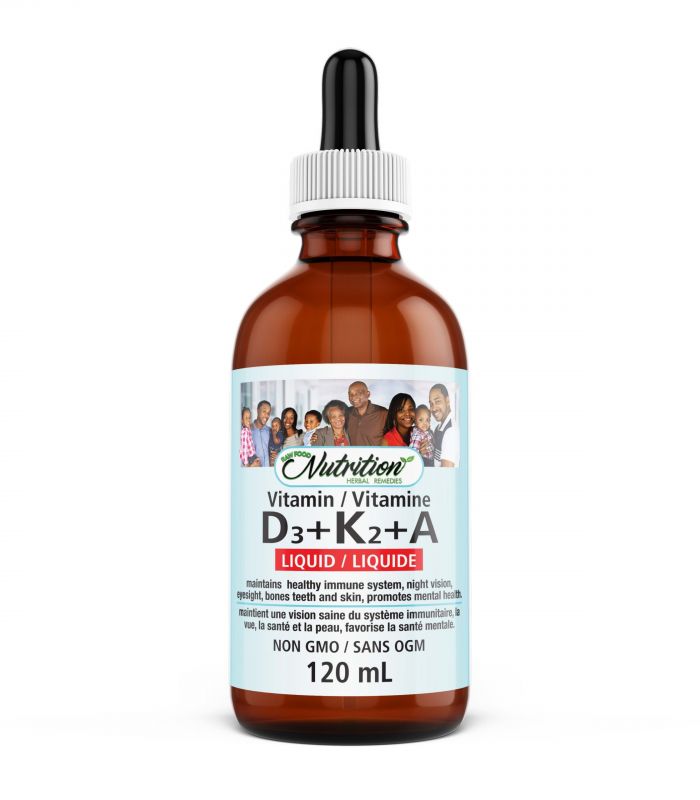Understanding Breast Cancer
Understanding Breast Cancer

[fusion_builder_container hundred_percent=”no” equal_height_columns=”no” hide_on_mobile=”small-visibility,medium-visibility,large-visibility” background_position=”center center” background_repeat=”no-repeat” fade=”no” background_parallax=”none” enable_mobile=”no” parallax_speed=”0.3″ video_aspect_ratio=”16:9″ video_loop=”yes” video_mute=”yes” overlay_opacity=”0.5″ border_style=”solid” padding_top=”20px” padding_bottom=”20px”][fusion_builder_row][fusion_builder_column type=”1_1″ spacing=”” center_content=”no” hover_type=”none” link=”” min_height=”” hide_on_mobile=”small-visibility,medium-visibility,large-visibility” class=”” id=”” background_color=”” background_image=”” background_position=”left top” background_repeat=”no-repeat” border_size=”0″ border_color=”” border_style=”solid” border_position=”all” padding=”” dimension_margin=”undefined” animation_type=”” animation_direction=”left” animation_speed=”0.3″ animation_offset=”” last=”no”][fusion_text]
If you or a loved one has been diagnosed with breast cancer, it’s important to understand some basics: What is breast cancer and how does it happen? In this section, you can learn about how breast cancer develops, how many people get breast cancer, and what factors can increase risk for getting breast cancer. You also can learn more about signs and symptoms to watch for and how to manage any fears you may have about breast cancer. Breast cancer is an uncontrolled growth of breast cells.
To better understand breast cancer, it helps to understand how any cancer can develop. Cancer occurs as a result of mutations, or abnormal changes, in the genes responsible for regulating the growth of cells and keeping them healthy. The genes are in each cell’s nucleus, which acts as the “control room” of each cell. Normally, the cells in our bodies replace themselves through an orderly process of cell growth: healthy new cells take over as old ones die out. But over time, mutations can “turn on” certain genes and “turn off” others in a cell. That changed cell gains the ability to keep dividing without control or order, producing more cells just like it and forming a tumor.
A tumor can be benign (not dangerous to health) or malignant (has the potential to be dangerous). Benign tumors are not considered cancerous: their cells are close to normal in appearance, they grow slowly, and they do not invade nearby tissues or spread to other parts of the body. Malignant tumors are cancerous. Left unchecked, malignant cells eventually can spread beyond the original tumor to other parts of the body.
The term “breast cancer” refers to a malignant tumor that has developed from cells in the breast. Usually breast cancer either begins in the cells of the lobules, which are the milk-producing glands, or the ducts, the passages that drain milk from the lobules to the nipple. Less commonly, breast cancer can begin in the stromal tissues, which include the fatty and fibrous connective tissues of the breast.
Over time, cancer cells can invade nearby healthy breast tissue and make their way into the underarm lymph nodes, small organs that filter out foreign substances in the body. If cancer cells get into the lymph nodes, they then have a pathway into other parts of the body. The breast cancer’s stage refers to how far the cancer cells have spread beyond the original tumor Breast cancer is always caused by a genetic abnormality (a “mistake” in the genetic material). However, only 5-10% of cancers are due to an abnormality inherited from your mother or father.
About 90% of breast cancers are due to genetic abnormalities that happen as a result of the aging process and the “wear and tear” of life in general. There are steps every person can take to help the body stay as healthy as possible and lower risk of breast cancer or a breast cancer recurrence (such as maintaining a healthy weight, not smoking, limiting alcohol, and exercising regularly). Learn what you can do to manage. Always remember, breast cancer is never anyone’s fault. Feeling guilty, or telling yourself that breast cancer happened because of something you or anyone else did, is not productive.
What is Cancer?
The body is made up of trillions of living cells. Normal body cells grow, divide, and die in an orderly fashion. During the early years of a person’s life, normal cells divide faster to allow the person to grow. After the person becomes an adult, most cells divide only to replace worn-out or dying cells or to repair injuries. Cancer begins when cells in a part of the body start to grow out of control. There are many kinds of cancer, but they all start because of out-of-control growth of abnormal cells. Cancer cell growth is different from normal cell growth.
Instead of dying, cancer cells continue to grow and form new, abnormal cells. Cancer cells can also invade (grow into) other tissues, something that normal cells cannot do. Growing out of control and invading other tissues are what makes a cell a cancer cell. Cells become cancer cells because of damage to DNA. DNA is in every cell and directs all its actions. In a normal cell, when DNA gets damaged the cell either repairs the damage or the cell dies. In cancer cells, the damaged DNA is not repaired, but the cell doesn’t die like it should. Instead, this cell goes on making new cells that the body does not need.
These new cells will all have the same damaged DNA as the first cell does. People can inherit damaged DNA, but most DNA damage is caused by mistakes that happen while the normal cell is reproducing or by something in our environment. Sometimes the cause of the DNA damage is something obvious, like cigarette smoking. But often no clear cause is found. In most cases the cancer cells form a tumor. Some cancers, like leukemia, rarely form tumors. Instead, these cancer cells involve the blood and blood-forming organs and circulate through other tissues where they grow. Cancer cells often travel to other parts of the body, where they begin to grow and form new tumors that replace normal tissue.
This process is called metastasis. It happens when the cancer cells get into the bloodstream or lymph vessels of our body. No matter where a cancer may spread, it is always named for the place where it started. For example, breast cancer that has spread to the liver is still called breast cancer, not liver cancer. Likewise, prostate cancer that has spread to the bone is metastatic prostate cancer, not bone cancer. Different types of cancer can behave very differently. For example, lung cancer and breast cancer are very different diseases. They grow at different rates and respond to different treatments.
That is why people with cancer need treatment that is aimed at their particular kind of cancer. Not all tumors are cancerous. Tumors that aren’t cancer are called benign. Benign tumors can cause problems – they can grow very large and press on healthy organs and tissues. But they cannot grow into (invade) other tissues. Because they can’t invade, they also can’t spread to other parts of the body (metastasize). These tumors are almost never life threatening.
What is breast cancer?
Breast cancer is a malignant tumor that starts in the cells of the breast. A malignant tumor is a group of cancer cells that can grow into (invade) surrounding tissues or spread (metastasize) to distant areas of the body. The disease occurs almost entirely in women, but men can get it, too. The remainder of this document refers only to breast cancer in women.

The female breast is made up mainly of lobules (milk-producing glands), ducts (tiny tubes that carry the milk from the lobules to the nipple), and stroma (fatty tissue and connective tissue surrounding the ducts and lobules, blood vessels, and lymphatic vessels). Most breast cancers begin in the cells that line the ducts (ductal cancers). Some begin in the cells that line the lobules (lobular cancers), while a small number start in other tissues.
The lymph (lymphatic) system of the breast
The lymph system is important to understand because it is one way breast cancers can spread. This system has several parts. Lymph nodes are small, bean-shaped collections of immune system cells (cells that are important in fighting infections) that are connected by lymphatic vessels. Lymphatic vessels are like small veins, except that they carry a clear fluid called lymph (instead of blood) away from the breast. Lymph contains tissue fluid and waste products, as well as immune system cells. Breast cancer cells can enter lymphatic vessels and begin to grow in lymph nodes. Most lymphatic vessels in the breast connect to lymph nodes under the arm (axillary nodes). Some lymphatic vessels connect to lymph nodes inside the chest (internal mammary nodes) and those either above or below the collarbone (supraclavicular or infraclavicular nodes).

If the cancer cells have spread to lymph nodes, there is a higher chance that the cells could have also gotten into the bloodstream and spread (metastasized) to other sites in the body. The more lymph nodes that have breast cancer, the more likely it is that the cancer may be found in other organs as well. Because of this, finding cancer in one or more lymph nodes often affects the treatment plan. Still, not all women with cancer cells in their lymph nodes develop metastases, and some women can have no cancer cells in their lymph nodes and later develop metastases.
Benign breast lumps
Most breast lumps are not cancerous (benign). Still, some may need to be sampled and viewed under a microscope to prove they are not cancer.
Fibrosis and cysts
Most lumps turn out to be caused by fibrosis and/or cysts, benign changes in the breast tissue that happen in many women at some time in their lives. (This is sometimes called fibrocystic changes and used to be called fibrocystic disease.) Fibrosis is the formation of scar-like (fibrous) tissue, and cysts are fluid-filled sacs. These conditions are most often diagnosed by a doctor based on symptoms, such as breast lumps, swelling, and tenderness or pain. These symptoms tend to be worse just before a woman’s menstrual period is about to begin. Her breasts may feel lumpy and, sometimes, she may notice a clear or slightly cloudy nipple discharge.
Fibroadenomas and intraductal papillomas
Benign breast tumors such as fibroadenomas or intraductal papillomas are abnormal growths, but they are not cancerous and do not spread outside the breast to other organs. They are not life threatening. Still, some benign breast conditions are important because women with these conditions have a higher risk of developing breast cancer. For more information see the section, “What are the risk factors for breast cancer?” and our document, Non-cancerous Breast Conditions.
General breast cancer terms
Here are some of the key words used to describe breast cancer.
Carcinoma – This is a term used to describe a cancer that begins in the lining layer (epithelial cells) of organs like the breast. Nearly all breast cancers are carcinomas (either ductal carcinomas or lobular carcinomas).
Adenocarcinoma An adenocarcinoma is a type of carcinoma that starts in glandular tissue (tissue that makes and secretes a substance). The ducts and lobules of the breast are glandular tissues (they make breast milk), so cancers starting in these areas are often called adenocarcinomas. Carcinoma in situ, this term is used for an early stage of cancer, when it is confined to the layer of cells where it began. In breast cancer, in situ means that the cancer cells remain confined to ducts (ductal carcinoma in situ). The cells have not grown into (invaded) deeper tissues in the breast or spread to other organs in the body.
Carcinoma in situ of the breast is sometimes referred to as non-invasive or pre-invasive breast cancer because it might develop into an invasive breast cancer if left untreated. When cancer cells are confined to the lobules it is called lobular carcinoma in situ. This is not actually a true cancer or pre-cancer, and is discussed more in the section, “What are the risk factors for breast cancer?”
Invasive (infiltrating) carcinoma – An invasive cancer is one that has already grown beyond the layer of cells where it started (as opposed to carcinoma in situ). Most breast cancers are invasive carcinomas— either invasive ductal carcinoma or invasive lobular carcinoma. Sarcoma Sarcomas are cancers that start in connective tissues such as muscle tissue, fat tissue, or blood vessels.
Types of breast cancers
There are several types of breast cancer, but some of them are quite rare. In some cases a single breast tumor can be a combination of these types or be a mixture of invasive and in situ cancer.
Ductal carcinoma in situ
Ductal carcinoma in situ (DCIS; also known as intraductal carcinoma) is the most common type of non-invasive breast cancer. DCIS means that the cancer cells are inside the ducts but have not spread through the walls of the ducts into the surrounding breast tissue. About 1 in 5 new breast cancer cases will be DCIS. Nearly all women diagnosed at this early stage of breast cancer can be cured. A mammogram is often the best way to find DCIS early. When DCIS is diagnosed, the pathologist (a doctor specializing in diagnosing disease from tissue samples) will look for areas of dead or dying cancer cells, called tumor necrosis, within the tissue sample. If necrosis is present, the tumor is likely to be more aggressive. The term comedocarcinoma is often used to describe DCIS with large areas of necrosis. The pathologist will also note how abnormal the cells appear, especially the part of cells where DNA is found (the nucleus).
Lobular carcinoma in situ
This is not a true cancer or pre-cancer, and is discussed in the section “What are the risk factors for breast cancer?” Invasive (or infiltrating) ductal carcinoma This is the most common type of breast cancer.
Invasive (or infiltrating) ductal carcinoma (IDC)
starts in a milk duct of the breast, breaks through the wall of the duct, and grows into the fatty tissue of the breast. At this point, it may be able to spread (metastasize) to other parts of the body through the lymphatic system and bloodstream. About 8 of 10 invasive breast cancers are infiltrating ductal carcinomas. Invasive (or infiltrating) lobular carcinoma Invasive lobular carcinoma (ILC) starts in the milk-producing glands (lobules). Like IDC, it can spread (metastasize) to other parts of the body. About 1 invasive breast cancer in 10 is an ILC. Invasive lobular carcinoma may be harder to detect by a mammogram than invasive ductal carcinoma.
Less common types of breast cancer
Inflammatory breast cancer:
This uncommon type of invasive breast cancer accounts for about 1% to 3% of all breast cancers. Usually there is no single lump or tumor. Instead, inflammatory breast cancer (IBC) makes the skin on the breast look red and feel warm. It also may give the breast skin a thick, pitted appearance that looks a lot like an orange peel. Doctors now know that these changes are not caused by inflammation or infection, but by cancer cells blocking lymph vessels in the skin. The affected breast may become larger or firmer, tender, or itchy.
In its early stages, inflammatory breast cancer is often mistaken for an infection in the breast (called mastitis) and treated as an infection with antibiotics. If the symptoms are caused by cancer, they will not improve, and a biopsy will find cancer cells. Because there is no actual lump, it might not show up on a mammogram, which can make it even harder to find it early. This type of breast cancer tends to have a higher chance of spreading and a worse outlook (prognosis) than typical invasive ductal or lobular cancer. For more details about this condition, see our document, Inflammatory Breast Cancer.
Triple-negative breast cancer:
This term is used to describe breast cancers (usually invasive ductal carcinomas) whose cells lack estrogen receptors and progesterone receptors, and do not have an excess of the HER2 protein on their surfaces. (See the section, “How is breast cancer diagnosed?” for more detail on these receptors.) Breast cancers with these characteristics tend to occur more often in younger women and in African-American women. Triple-negative breast cancers tend to grow and spread more quickly than most other types of breast cancer. Because the tumor cells lack these certain receptors, neither hormone therapy nor drugs that target HER2 are effective treatments (but chemotherapy can still be useful if needed).
Paget disease of the nipple:
This type of breast cancer starts in the breast ducts and spreads to the skin of the nipple and then to the areola, the dark circle around the nipple. It is rare, accounting for only about 1% of all cases of breast cancer. The skin of the nipple and areola often appears crusted, scaly, and red, with areas of bleeding or oozing. The woman may notice burning or itching. Paget disease is almost always associated with either ductal carcinoma in situ (DCIS) or infiltrating ductal carcinoma. Treatment often requires mastectomy. If no lump can be felt in the breast tissue, and the biopsy shows DCIS but no invasive cancer, the outlook (prognosis) is excellent. If invasive cancer is present, the prognosis is not as good, and the cancer will need to be staged and treated like any other invasive cancer.
Phyllodes tumor:
This very rare breast tumor develops in the stroma (connective tissue) of the breast, in contrast to carcinomas, which develop in the ducts or lobules. Other names for these tumors include phylloides tumor and cystosarcoma phyllodes. These tumors are usually benign but on rare occasions may be malignant. Benign phyllodes tumors are treated by removing the tumor along with a margin of normal breast tissue. A malignant phyllodes tumor is treated by removing it along with a wider margin of normal tissue, or by mastectomy. Surgery is often all that is needed, but these cancers might not respond as well to the other treatments used for more common breast cancers. When a malignant phyllodes tumor has spread, it can be treated with the chemotherapy given for soft-tissue sarcomas (this is discussed in detail in our document, Soft-tissue Sarcomas.
Angiosarcoma:
This form of cancer starts in cells that line blood vessels or lymph vessels. It rarely occurs in the breasts. When it does, it usually develops as a complication of previous radiation treatments. This is an extremely rare complication of breast radiation therapy that can develop about 5 to 10 years after radiation. Angiosarcoma can also occur in the arms of women who develop lymphedema as a result of lymph node surgery or radiation therapy to treat breast cancer. (For information on lymphedema, see the section, “How is breast cancer treated?”) These cancers tend to grow and spread quickly. Treatment is generally the same as for other sarcomas. See our document, Sarcoma – Adult Soft Tissue Cancer.
Special types of invasive breast carcinoma
There are some special types of breast cancer that are sub-types of invasive carcinoma. These are often named after features seen when they are viewed under the microscope, like the ways the cells are arranged. Some of these may have a better prognosis than standard infiltrating ductal carcinoma.
These include:
- Adenoid cystic (or adenocystic) carcinoma
- Low-grade adenosquamous carcinoma (this is a type of metaplastic carcinoma)
- Medullary carcinoma
- Mucinous (or colloid) carcinoma
- Papillary carcinoma
- Tubular carcinoma
Some sub-types have the same or maybe worse prognosis than standard infiltrating ductal carcinoma.
These include:
- Metaplastic carcinoma (most types, including spindle cell and squamous)
- Micropapillary carcinoma
- Mixed carcinoma (has features of both invasive ductal and lobular) In general, all of these sub-types are still treated like standard infiltrating ductal carcinoma.
[/fusion_text][/fusion_builder_column][/fusion_builder_row][/fusion_builder_container]
Related Health Stories
How To Lower Your Cholesterol
Health Coaching
Foods That Dissolve Blood Clots
Common Questions About Fruits and Vegetables
THESE TINY LITTLE SEEDS making BIG news
Anti-Inflammatory Pineapple Smoothie
Lung Mixture
Blueberries
BLOOD PRESSURE READINGS
Latest Stories
-

Natural Remedies for Foot Fungus
January 2, 2017Read more -

Lifestyle Transitioning
March 22, 2017Read more -

Kiwi Fruit – Good for Anemia
April 5, 2017Read more -

Fagonia cretica / dhanvyaas
April 5, 2017Read more -

Understanding Breast Cancer
April 10, 2017Read more -

Role of Chemotherapy – The Pain of Cancer
April 10, 2017Read more -

The benefits of vitamin D3+ K2+A for patients with high blood pressure
April 10, 2017Read more -

Vitamin D and people of colour
April 10, 2017Read more -

GUIDE TO: Weight Loss & Maintenance
April 10, 2017Read more -

What’s the real point of eating?
April 10, 2017Read more
-
Free Recipes e-Book
-
Orders & Shipping
-
Exchanges & Returns
We specialize in rawfood and rawfood preparation, herbs and herbal formulas, specialty oils, vitamins and natural treatment programs that is proven to work.









